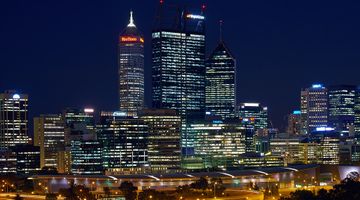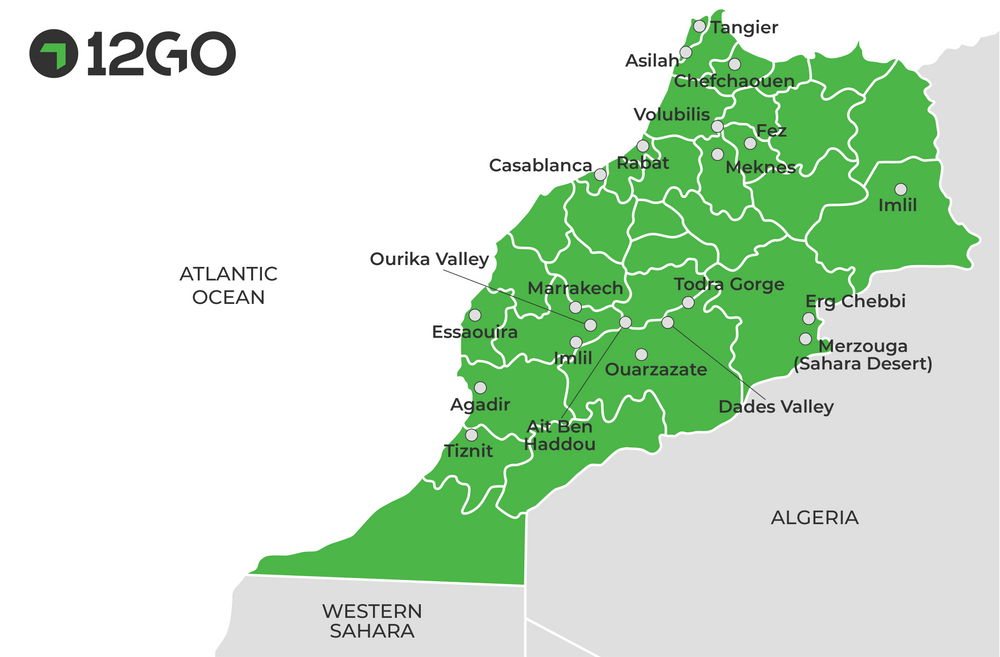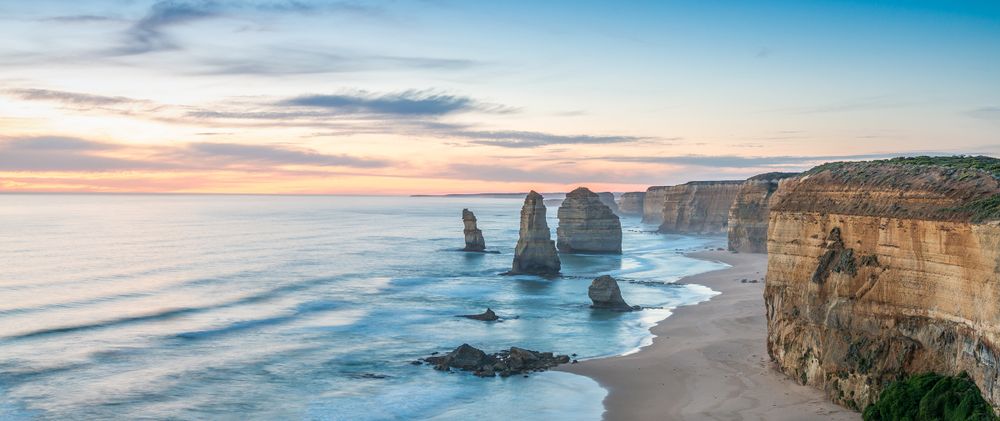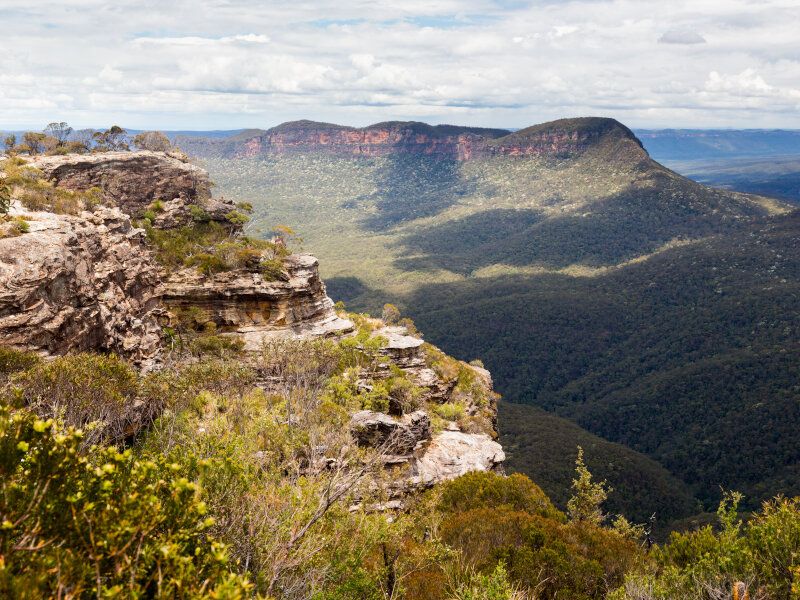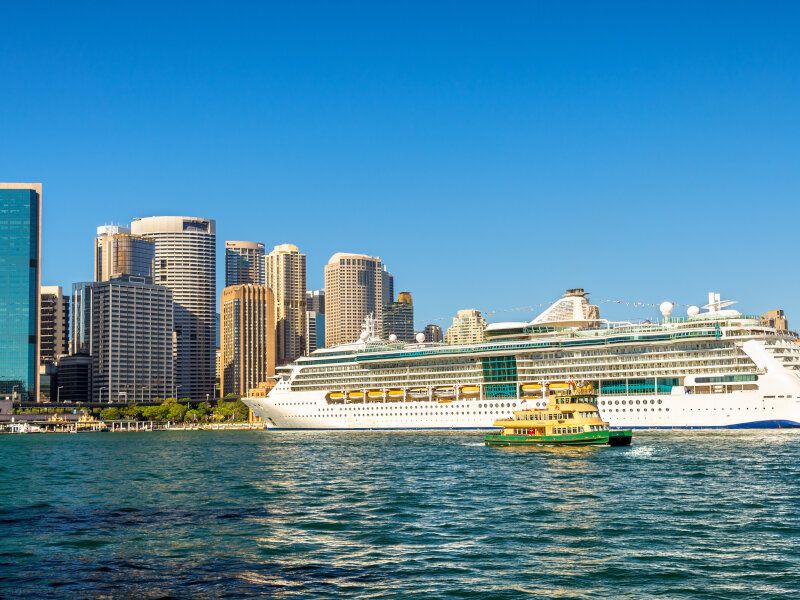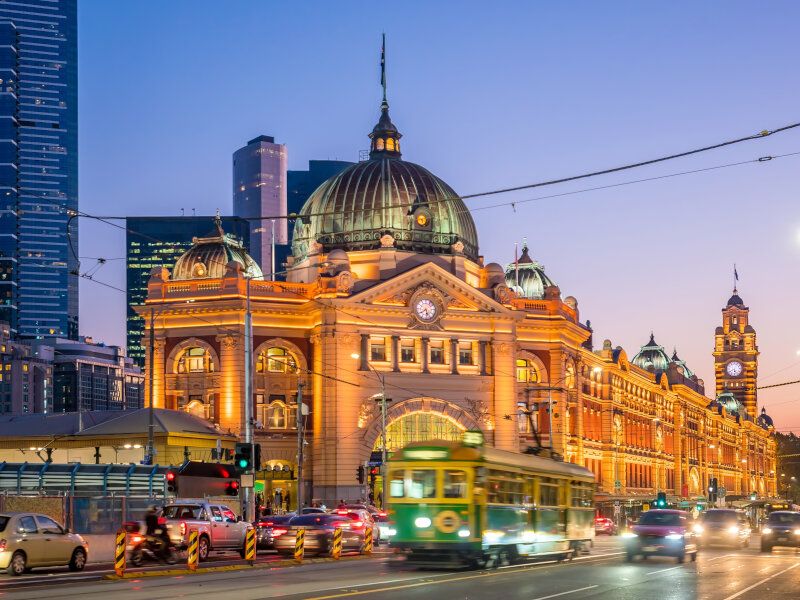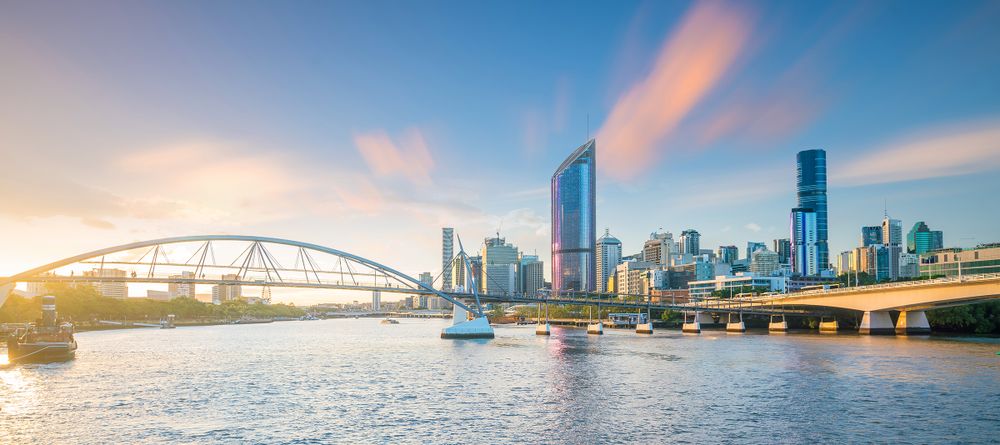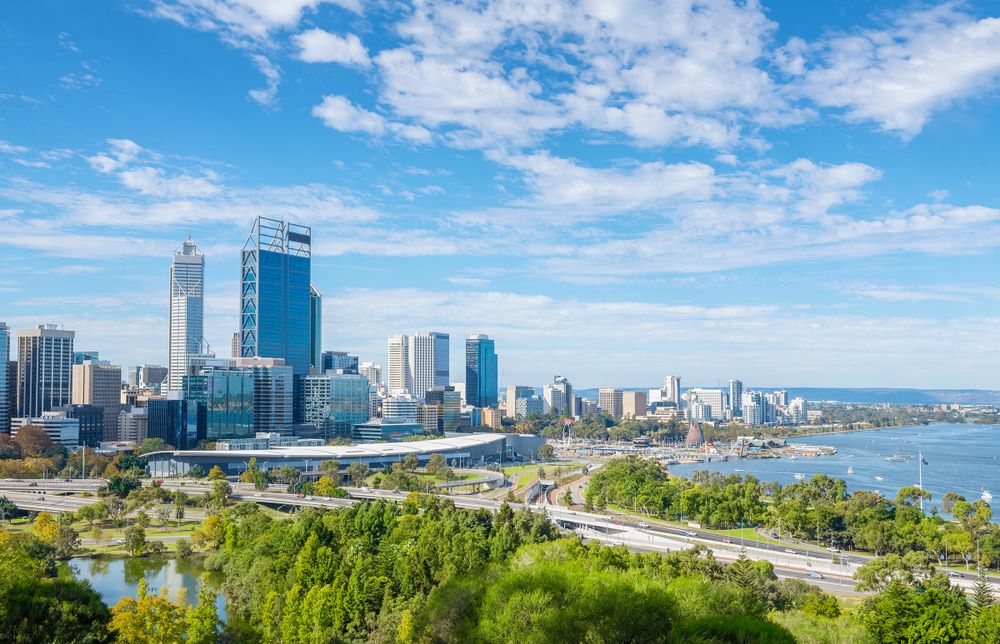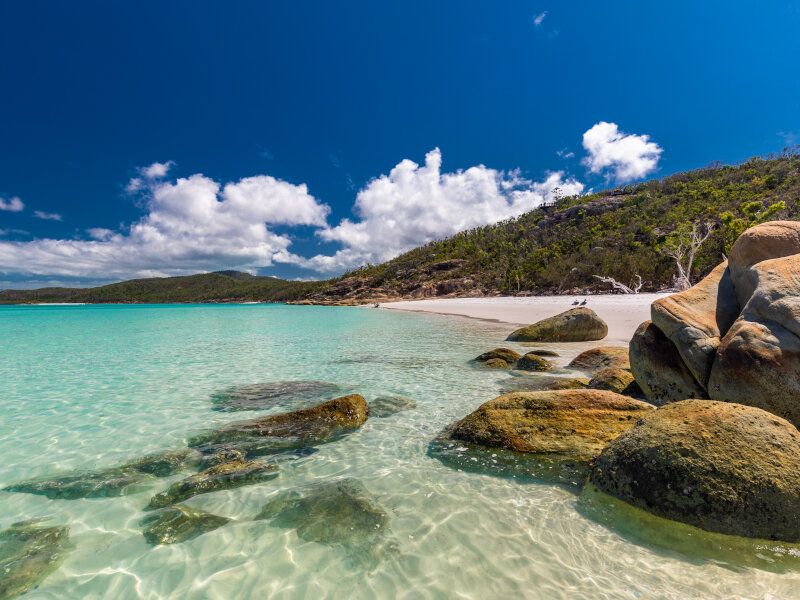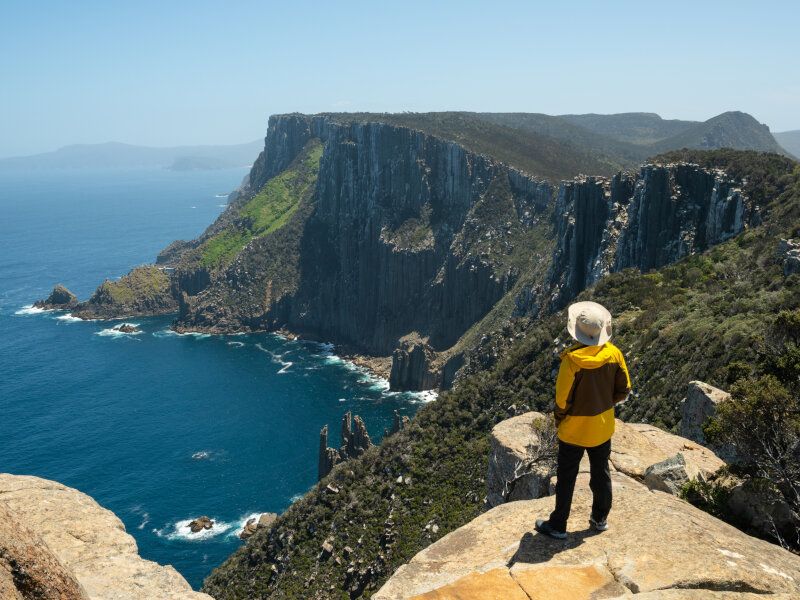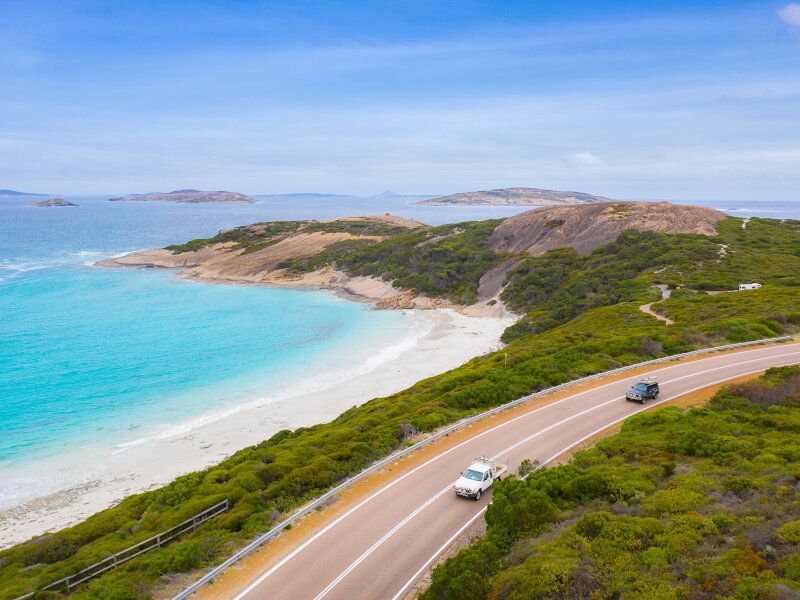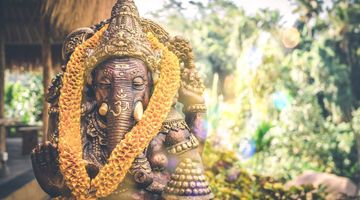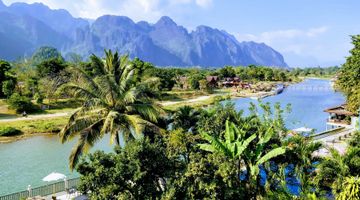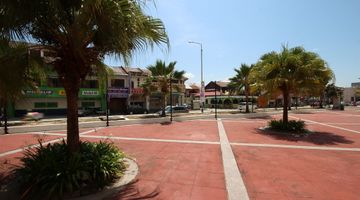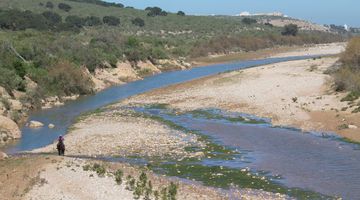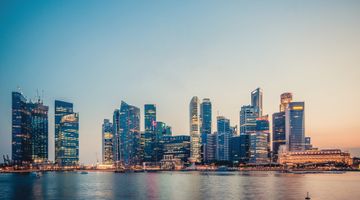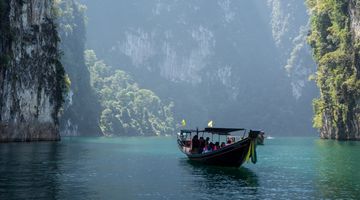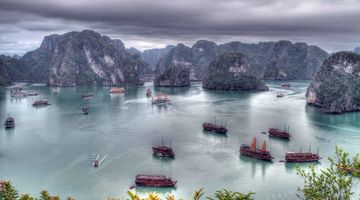Ultimate Australia Travel Guide 2025
Australia is packed with unforgettable experiences - from Sydney and Melbourne to the natural wonders of the Great Barrier Reef and Uluru. Whether chasing adventure, relaxing on world-class beaches, or exploring local culture, this guide will help you plan the perfect Aussie getaway. With 12Go, getting around is easy, so you can focus on enjoying all the beauty and excitement Australia offers.
How to get to Australia?
The most common way to get to Australia is to fly into one of the major international airports, such as Sydney (SYD), Melbourne (MEL) or Brisbane (BNE). There are many direct routes or connecting flights via Singapore, Hong Kong, or Dubai. If you are near the Pacific Ocean, you may find cruise options to Australia, although this is slower.
United States to Australia
To get to Australia from the United States, fly from major U.S. hubs like Los Angeles (LAX), San Francisco (SFO), or Dallas-Fort Worth (DFW) to major Australian cities such as Sydney (SYD), Melbourne (MEL), or Brisbane (BNE). Airlines like Qantas, American Airlines, and United offer direct flights, with travel times ranging from 14 to 17 hours. For cheaper options, consider connecting flights via hubs like Honolulu (HNL), Auckland (AKL), or Singapore (SIN).
Europe to Australia
To get from Europe to Australia, fly from major European hubs like London (LHR), Frankfurt (FRA), or Paris (CDG) to Australian cities such as Sydney (SYD), Melbourne (MEL), or Perth (PER).
Famous airlines like Qantas, Emirates, Qatar Airways, and Singapore Airlines offer one-stop routes, often connecting through hubs like Dubai (DXB), Doha (DOH), or Singapore (SIN). Due to the distance, direct flights are rare, so plan for a stopover. Travel time, including layovers, usually ranges from 20 to 30 hours.
Singapore to Australia
Flights from Singapore (SIN) to Sydney (SYD) are frequent and take approximately eight hours. Airlines like Singapore Airlines, Qantas, and Scoot operate direct flights daily. To book, check for deals on round-trip tickets or consider bundling flights with accommodations. For budget options, look at airlines like Scoot or connecting flights via other hubs.
Why should you visit Australia?
Australia truly has it all. From stunning natural landscapes to dynamic cities, it offers something for every type of traveler. First, you can explore fantastic wildlife - where else can you cuddle a koala, see kangaroos hopping in the wild, or snorkel with turtles in the Great Barrier Reef? The wildlife here is iconic and unique.
Next, Australia’s outdoor adventures are unbeatable. Whether hiking through the Blue Mountains, surfing at Bondi Beach, or cruising along the Great Ocean Road, there’s always something to do in nature.
For culture lovers, Australia’s cities—Sydney, Melbourne, and Brisbane—are buzzing with arts, food, and entertainment. You can visit world-class museums, catch a live music show, or eat at a trendy café.
And, of course, Australia is home to some of the world’s most famous landmarks, like Uluru and the Sydney Opera House, that you’ll want to see at least once in your lifetime. Australia has it all, whether you’re in the mood for adventure, relaxation, or cultural exploration. It's a place that never disappoints!
Visa requirements in Australia
Before traveling to Australia, it’s essential to determine the specific visa requirements based on your nationality and the purpose of your visit. Australia offers various visa types designed for tourism, business, or family visits, each with its conditions and application processes. Ensuring you have the correct visa streamlines your entry and avoids potential complications during your trip.
1. Tourist Visa (Visitor Visa - Subclass 600)
For short visits (tourism, business, or family visits), most travelers will need to apply for this visa. It’s usually valid for 3, 6, or 12 months. You can apply online, and processing times can vary.
2. Electronic Travel Authority (ETA - Subclass 601)
This is available for passport holders from certain countries, such as the US, Canada, and most European nations. The ETA allows you to visit Australia for up to three months for tourism or business. You can apply online, and it's usually approved within minutes.
3. eVisitor Visa (Subclass 651)
This is similar to the ETA and is available to passport holders from European Union countries. It allows for short stays (up to 3 months) for tourism or business purposes. Applications are made online, and approval is usually quick.
4. Student Visa (Subclass 500)
If you plan to study in Australia for more than 3 months, you’ll need this visa. It’s also valid for working part-time while you study.
5. Working Holiday Visa (Subclass 417 or 462)
This visa is available for travelers aged 18-30 (35 for some countries) from eligible countries. It allows you to work and travel in Australia for up to one year. You can extend it for a second or third year if you meet certain conditions, like working in regional areas.
6. Working Visa (Various Subclasses)
If you plan to work in Australia, you’ll need a visa specific to your occupation or industry. Several options exist, such as the Temporary Skill Shortage Visa (Subclass 482) or the Skilled Independent Visa (Subclass 189).
How to Apply?
Most visas can be applied online through the Department of Home Affairs website. Please ensure you have all the necessary documents, like a valid passport, proof of sufficient funds, and possibly a health or character assessment. Check the official Australian government website for the most accurate and up-to-date visa information based on your nationality and travel plans.
When to visit Australia?
The best time to visit Australia depends on the region you want to explore. Spring (September to November) and autumn (March to May) are perfect for Sydney and Melbourne because of the mild weather and fewer tourists. If you’re heading to the Great Barrier Reef, June to October is ideal. It’s the dry season, and the waters are clear for diving and snorkeling.
Perth is best visited between September and November when the wildflowers bloom and the temperatures are more relaxed. Tasmania is great from December to February, as it’s the warmest time of the year, making outdoor activities more enjoyable.
Where to travel in Australia?
Australia has so much to see. Go to Sydney for the Opera House, Harbour Bridge, Bondi Beach, or Melbourne for art, great food, and hidden laneways. If you love nature, visit the Great Barrier Reef for snorkeling diving or explore Uluru and Kata Tjuta in the outback.
Tasmania is perfect for hikes, wildlife, and fantastic food. For wine lovers, Western Australia has stunning coastlines like Ningaloo Reef, the Pinnacles Desert, and Margaret River.
For tropical vibes, head to Cairns or the Whitsundays. If you want unique wildlife, Kangaroo Island is incredible. Choose what fits you best—city vibes, beaches, wildlife, or adventure!
Sydney
Sydney is Australia’s largest city, famous for its stunning harbor and iconic landmarks like the Sydney Opera House and Sydney Harbour Bridge. You can enjoy incredible views by taking a ferry to Manly Beach or walking along the scenic Bondi to Coogee coastal trail. The city's beaches, including Bondi, are perfect for surfing, swimming, or relaxing.
For culture, explore the historic Rocks District, the Art Gallery of New South Wales, and lively neighborhoods like Newtown or Surry Hills for food and nightlife. Nature lovers can visit Royal National Park or take a day trip to the Blue Mountains. Sydney has something for everyone — beaches, culture, and outdoor adventures!
Where to travel from Sydney?
Sydney to Melbourne. The train journey, departing from Sydney Central Station, offers both economy and first-class options, taking approximately 10 hours and 55 minutes. For budget-conscious travelers, buses are a cheaper alternative, though they typically take longer to complete the trip.
Sydney to Brisbane offers a route from New South Wales' city to Queensland's sunny coastal vibe, known for its beaches. The average trip takes 13 hours by bus/train. However you can use a plane from Sydney Airport Australia, for example Economy Jetstar Airways costs only 78$.
Sydney to Canberra takes you from Australia's largest city to the nation’s capital, offering a blend of cultural landmarks, national museums, etc. The trip takes about 3-4 hours by bus,
Sydney to Perth connects Australia's east coast with its far west, offering a journey from bustling urban life to Perth’s atmosphere, stunning beaches, and arts scene.
Sydney to Gold Coast City offers a route from Australia's iconic harbor to a popular beach destination known for its surf, theme parks, and nightlife.
Sydney to Adelaide takes you from Australia's eastern coast to the cultural heart of the south, known for its wineries, festivals, and so on.
Melbourne
Melbourne is Australia’s cultural capital, known for its arts scene, diverse food, and hidden laneways. Stroll through Hosier Lane for street art, shop at the historic Queen Victoria Market, or enjoy a coffee in one of the city’s famous cafés. The city’s tram network makes it easy to explore neighborhoods like Fitzroy for its creative vibe or St. Kilda for its beach and the iconic Luna Park.
Melbourne is also the gateway to fantastic day trips. Drive along the Great Ocean Road to see the Twelve Apostles, or visit the Yarra Valley for wine tasting. Phillip Island offers penguin parades for nature lovers, and the Dandenong Ranges are perfect for hiking. Melbourne is all about creativity, food, and adventure!
Where to travel from Melbourne?
Melbourne to Sydney To travel from Melbourne to Sydney, you can choose between flights, buses, or trains. Flights are the fastest option, taking around 2 hours and costing $129–$624, while trains and buses are more affordable but take longer (up to 23 hours). For a balance of speed and cost, flights with budget airlines like Jetstar Airways are popular, though buses and trains provide scenic and budget-friendly alternatives.
Melbourne to Adelaide To travel from Melbourne to Adelaide, you can choose flights, buses, or trains. Flights are the fastest option, taking about 2 hours and costing $95–$1,070, while buses and trains are cheaper but take 10–26 hours. For budget-friendly options, buses start at $46, while trains provide a comfortable alternative starting at $96.
Melbourne to Canberra To travel from Melbourne to Canberra, you can choose flights, buses, or trains. Flights are the fastest option, taking about 2 hours and costing $98–$199, while buses and trains are more affordable, starting at $54 but taking up to 16 hours. For budget-friendly travel, consider buses or bus-train combinations, with tickets starting at $54.
Melbourne to Brisbane To travel from Melbourne to Brisbane, flights are the fastest option, taking about 3 hours and costing $155–$721. Trains are a slower but more affordable choice, with tickets ranging from $121 to $208 and travel times up to 50 hours. Flights are the most popular option, with over 130 daily departures.
Brisbane
Brisbane effortlessly balances city life with outdoor experiences. Start at South Bank, where you’ll find riverside parks, Streets Beach, and QAGOMA for top-tier art and culture. Hop on a CityCat ferry to take in views of the river and skyline, or head to Lone Pine Koala Sanctuary to cuddle a koala and hand-feed kangaroos.
Foodies can explore Howard Smith Wharves for waterfront dining or hit West End for cafes and global eats. At night, Fortitude Valley buzzes with rooftop bars and live music.
For day trips, the Gold Coast offers world-class surfing and theme parks, while the Sunshine Coast delivers pristine beaches. Don’t miss hiking the Glass House Mountains for unforgettable views or exploring the Scenic Rim for waterfalls and wineries. Brisbane isn’t just a city—it’s a gateway to the best of Queensland.
Where to go from Brisbane?
Brisbane to Sydney To travel from Brisbane to Sydney, flights are the quickest option, taking about 2 hours and costing $106 to $3,371. Trains are a more affordable choice, with tickets ranging from $75 to $105 and travel times up to 24 hours. The most popular option is the train, with 77% of travelers choosing it.
Brisbane to Gold Coast City The quickest and most affordable way to travel from Brisbane to Gold Coast City is by bus, with tickets costing between $15 and $22. Trains are also a low-cost option at $8, while flights are the most expensive, ranging from $284 to $1,318. The majority of travelers prefer taking the bus, with 96% choosing this option.
Brisbane to Cairns The quickest way to travel from Brisbane to Cairns is by flight, with tickets ranging from $224 to $810. While flights are the fastest, trains are a more affordable option, costing between $139 and $244. Most travelers prefer taking the train, with 74% choosing this option.
Perth
Perth is a sunny and chilled city with plenty of things to explore. Start with Kings Park, one of the largest urban parks in the world, for stunning city views and lush gardens. Chill at Cottesloe Beach for swimming, sunsets, and café hopping.
Enjoy the market's craft breweries in Fremantle and tour the historic Fremantle Prison. Take a ferry to Rottnest Island to meet quokkas, bike around, and snorkel in crystal-clear bays. For wine and food, head to Swan Valley or take a day trip to Margaret River, famous for its vineyards and surfing. Nature lovers can visit the Pinnacles Desert or go whale watching during the season. Perfect for beaches, wildlife, food, and adventure!
Where to go from Perth?
Perth to Sydney The only option to travel from Perth to Sydney is by flight, with tickets costing around $332 and a flight time of approximately 5 hours. There are 14 flights per day, and it's recommended to book in advance and check in online to save time at the airport.
Perth to Melbourne The only way to travel from Perth to Melbourne is by flight, which takes approximately 4 hours and costs around $131. There are 15 flights per day, and it's recommended to book in advance and check in online. Airlines operating on this route include Jetstar Airways, Qantas Airways, and Virgin Australia Airlines.
Perth to Adelaide The only way to travel from Perth to Adelaide is by flight, which takes about 3 hours and costs around $232. There are 6 flights per day, operated by Jetstar Airways, Qantas Airways, and Virgin Australia Airlines. It’s recommended to book in advance and check in online to save time at the airport.
Australia is home to an abundance of breathtaking destinations waiting to be explored! From natural wonders to thriving cities, there's no shortage of unforgettable places to visit. For example:
Great Barrier Reef
The Great Barrier Reef is a must-see for any nature lover. It’s one of the world’s most famous coral reefs, and for good reason. Whether snorkeling or diving, you'll be surrounded by coral gardens, tropical fish, and the chance to swim alongside sea turtles, rays, and even sharks. The crystal-clear waters make it a perfect spot for underwater exploration.
There are plenty of day trips and tours, whether you want to explore by boat or join a guided dive. You can even take a glass-bottom boat ride or visit one of the reef’s remote islands for a more relaxed experience. It’s a once-in-a-lifetime adventure that showcases Australia’s natural beauty at its best.
Uluru
Uluru is more than just a destination—it’s the spiritual heart of Australia. Nestled in the red desert of the Northern Territory, this iconic sandstone monolith is an absolute must-see. Its striking, ever-changing colors at sunrise and sunset are breathtaking, casting a magical glow over the surrounding desert.
But Uluru is not just about the views; it’s about the deep connection to the land and its cultural significance to the Anangu people. Exploring the base of the rock, you’ll find ancient cave paintings and sacred sites passed down through generations.
Visiting Uluru offers more than sightseeing—it’s a chance to connect with Australia’s rich history and spirituality. Whether hiking, taking a guided tour, or simply soaking in the beauty, this place will leave you in awe and with a deeper appreciation for the land.
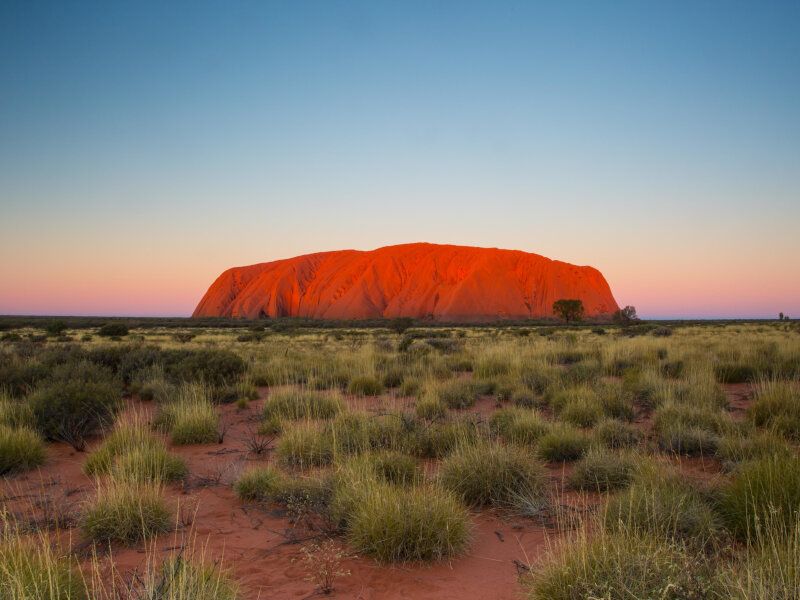
Whitsunday Islands
The Whitsunday Islands are pure paradise—a group of 74 islands off the coast of Queensland, known for their crystal-clear waters, stunning white sand beaches, and tropical vibes. Whether sailing through the calm turquoise waters or relaxing on the iconic Whitehaven Beach, it’s hard not to feel like you’ve found your slice of heaven.
The sailing here is legendary, with countless opportunities to explore secluded coves, snorkel over coral reefs, and soak in the islands' natural beauty. Whitsunday Islands are also a gateway to the Great Barrier Reef, so if you're into marine life, you’re in for a treat.
But it's not just about the water—this is the place to unwind, enjoy fresh seafood, and enjoy the great island lifestyle. Whether you're spending the day on the beach, hiking to lookout points for panoramic views, or enjoying the nightlife, the Whitsundays offer a perfect balance of adventure and relaxation. It’s tropical bliss at its best.
Tasmania
Tasmania is a hidden gem, offering a perfect blend of rugged landscapes, rich history, and incredible food. Known for its wild national parks, it’s the ultimate destination for nature lovers and adventurers. From the towering peaks of Cradle Mountain to the serene beauty of Freycinet National Park, every corner of Tasmania invites exploration. You can hike, kayak, and even spot wildlife like Tasmanian devils and wallabies in their natural habitats.
But it’s not just about the outdoors. Tasmania is a food lover’s paradise, particularly if you’re into fresh seafood. Whether its oysters from the pristine waters of Dover or succulent Tasmanian salmon, you’ll find some of the best seafood in Australia here. Pair that with local cheeses, wines, and craft beers; you’ve got a culinary experience to remember.
Hobart, Tasmania’s charming capital, combines colonial architecture, quirky galleries, and a thriving food scene. Wander through the Salamanca Markets, stroll along the waterfront, or take a trip to Mount Wellington for stunning views of the city and beyond. Tasmania is a place that blends wild natural beauty with the warmth of its towns, making it a must-visit for anyone looking to discover something truly unique in Australia.
Blue Mountains. Just outside Sydney, with stunning hikes and scenic lookouts. Other gems include Kangaroo Island for wildlife, Darwin for outback adventures, and Adelaide for wine lovers. Australia has something for everyone!
How to Get Around Australia?
Getting around Australia is accessible with various transport options depending on where you're going and how far you want to travel.
Public transport is efficient for city travel. Major cities like Sydney, Melbourne, and Brisbane have buses, trams, and trains. In Sydney, the Opal card works for all public transport. You’ll need a Myki card for Melbourne's trains, trams, and buses.
Flights between major cities are common for longer distances. Budget airlines like Jetstar and Tigerair offer affordable options, while Qantas and Virgin Australia are reliable for non-budget travelers.
If you're driving, renting a car is a great way to explore, especially for trips like the Great Ocean Road or Outback adventures. Greyhound buses and regional train services are also available for travel between cities and remote areas.
Australia also has ferries for coastal travel, especially around Sydney, Tasmania, and the Whitsunday Islands. Bikes and e-scooters are becoming popular options for exploring cities or nearby islands.
Budget for Traveling in Australia
Your budget for a trip to Australia will depend on your preferences, itinerary, and the destinations you choose to explore. Whether you're looking for a luxurious experience or traveling with limited means, you have a range of options to suit any budget.
Accommodation in Australia
Budget: Hostels and motels start around $25–AUD 40 per night.
Mid-range: Hotels or private rooms in guesthouses cost about $80–$AUD 150 per night.
Luxury: High-end hotels and resorts can cost $200–AUD 500 per night.
Public transport in Australia
Public transport within cities is reasonably cheap, with daily fares of around $5–$1AUD 15 using Opal or Myki cards).
Renting a car can cost about $30–AUD 70 daily, depending on the vehicle.
Domestic flights range from $50–$30AUD 300 depending on the route and booking time.
Food in Australia
Budget: You can grab a meal at a food court or fast food chain for $10–AUD 15.
Mid-range: Dining at a casual restaurant costs around $20–AUD 40 per person.
Splurge: Fine dining or higher-end restaurants can earn back $50–AUD 100 or more.
Attractions in Australia
Most museums and parks are $10–AUD 30 for entry.
Nature-based activities like snorkeling or wildlife tours can range from $50–AUD 150.
Day trips and experiences, such as Great Barrier Reef tours or city sightseeing, can cost between $100 and $AUD 300
E-scooter or bike rentals: around $15–AUD 30 per hour.
SIM cards for local calls and data typically cost $20–$AUD 50 for a week’s use.
Overall, you might spend around $70- AUD 100 per day on an AUD 100 budget—plan for a comfortable mid-range experience for $150–AUD 250 daily. Luxury travelers will easily spend AUD 300+ daily. Adjust your plans based on the length of stay and the experiences you want to include!
Perfect Australia Itinerary
Day 1-3 (Sydney)
Day 1. Arrive in Sydney. Spend the day exploring the Sydney Opera House, Sydney Harbour Bridge, and the Royal Botanic Gardens. Take a ferry ride to Manly Beach for great views of the harbor.
Day 2. Visit Bondi Beach, walk the Bondi to Coogee coastal trail, and relax by the ocean. Enjoy a meal at Darling Harbour or check out the city's nightlife in the evening.
Day 3. Day trip to the Blue Mountains. Hike to see the Three Sisters rock formation, go to Echo Point, and enjoy the serene natural surroundings.
Day 4-5 (Melbourne)
Day 4. Fly to Melbourne. Explore the city’s laneways, street art, and cafes in Fitzroy and Hosier Lane. Visit Federation Square and the National Gallery of Victoria.
Day 5. Take a day trip along the Great Ocean Road to see the Twelve Apostles Loch Ard Gorge and stop by Apollo Bay. Return to Melbourne for a relaxed evening.
Day 6-7 (Whitsunday Islands)
Day 6. Fly to Airlie Beach. Head to Whitsunday Islands and enjoy a day of sailing and relaxing on Whitehaven Beach with its stunning white sand.
Day 7. Explore the Great Barrier Reef on a snorkel or dive tour. You’ll have the chance to see coral, sea turtles, and tropical fish. Fly to your next destination in the evening.
Day 8-9 (Cairns & Great Barrier Reef)
Day 8. Arrive in Cairns. Take a scenic trip to Kuranda via the Skyrail Rainforest Cableway, explore the Rainforestation Nature Park, or visit the Cairns Esplanade.
Day 9. Spend the day on the Great Barrier Reef. Whether snorkeling or diving, you’ll get up close to one of the world's most iconic ecosystems. Return to Cairns for an evening at the Night Markets.
Day 10 (Brisbane)
Fly to Brisbane. Visit South Bank, enjoy the Queensland Art Gallery, or take a Brisbane River cruise. Explore the City Botanic Gardens or hike to Mount Coot-tha for panoramic city views.
What to eat in Australia?
Australia’s food scene is full of unique flavors and classic eats.
Try a meat pie — it's savory and perfect for a snack. You’ll also need to try Vegemite on toast, it’s an Aussie staple, though it’s an acquired taste. For something sweet, grab a Tim Tam, a chocolate biscuit that’s just irresistible.
Pavlova is a must-try dessert with its crispy meringue and fresh fruit. Aussies also love a good BBQ, with sausages (or snags) and seafood like prawns. Don’t miss Lamingtons, sponge cake dipped in chocolate and coconut, or Barramundi, a local fish that’s always fresh and tasty.
For a snack, grab Anzac biscuits, a sweet treat with oats and coconut, or enjoy fish and chips by the beach. And, of course, don’t forget a flat white, Australia’s version of a perfect coffee. If you’re feeling adventurous, try kangaroo meat—lean and flavorful.
Australia’s food is all about fresh ingredients and simple but delicious flavors.
FAQ
1. Is it safe to swim in Australian waters? Yes, but always swim between the red-and-yellow flags on patrolled beaches. Watch for jellyfish and crocodile warnings in tropical regions.
2. What currency is used in Australia? The Australian Dollar (AUD) is the official currency. Credit cards are widely accepted, and ATMs are available in most areas.
3. What’s the time difference in Australia? Australia has three time zones: AEST (GMT+10), ACST (GMT+9:30), and AWST (GMT+8). Daylight Saving Time applies in some states.
